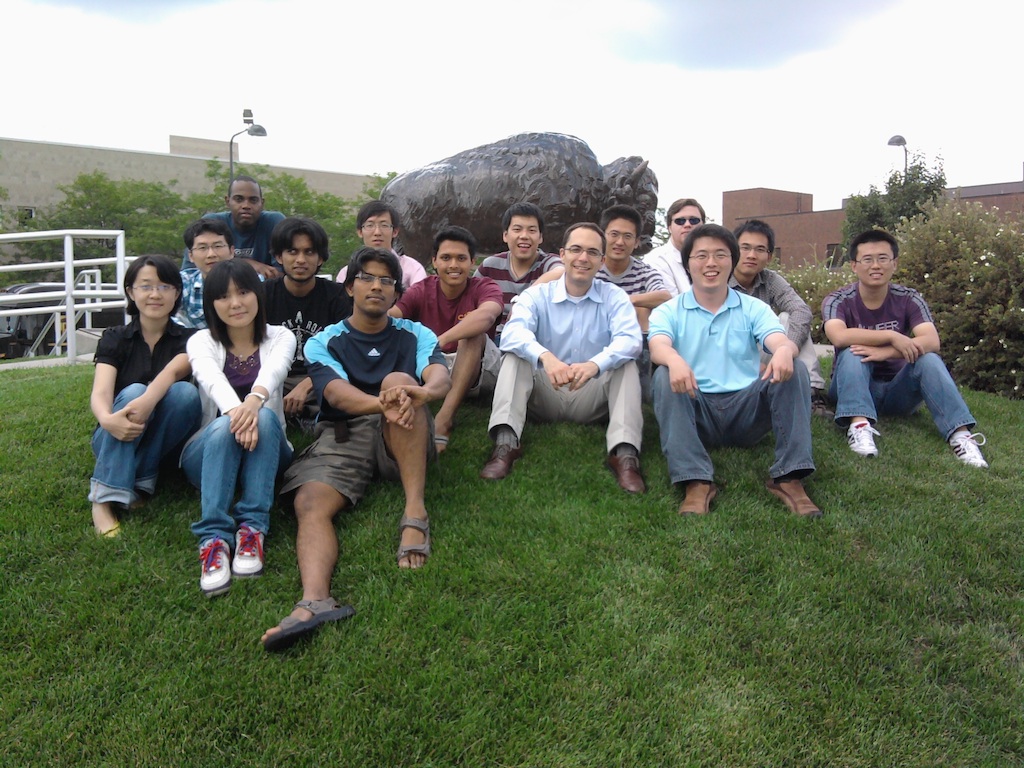
Jason J. Corso
| Snippets by Topic | |
| * | Active Clustering |
| * | Activity Recognition |
| * | Medical Imaging |
| * | Metric Learning |
| * | Semantic Segmentation |
| * | Video Segmentation |
| * | Video Understanding |
| Selected Project Pages | |
| * | Action Bank |
| * | LIBSVX: Supervoxel Library and Evaluation |
| * | Brain Tumor Segmentation |
| * | CAREER: Generalized Image Understanding |
| * | Summer of Code 2010: The Visual Noun |
| * | ACE: Active Clustering |
| * | ISTARE: Intelligent Spatiotemporal Activity Reasoning Engine |
| * | GBS: Guidance by Semantics |
| * | Semantic Video Summarization |
| Data Sets | |
| * | A2D: Actor-Action Dataset |
| * | YouCook |
| * | Chen Xiph.org |
| * | UB/College Park Building Facades |
| Other Information | |
| * | Code/Data Downloads |
| * | List of Grants |
Summer of Code 2010: The "Visual Noun"
PI: Jason Corso
Students: Avik Kumar, Bing Zhang, Chetan Ramaiah, Kushal Suryamohan, Sagar Manohar Waghmare, Yingjie Miao, Zhixiang Liu, Digvijay Gagneja, Alex Haynie, Xin Chen, Suxin Guo, Hui Li

Students: Avik Kumar, Bing Zhang, Chetan Ramaiah, Kushal Suryamohan, Sagar Manohar Waghmare, Yingjie Miao, Zhixiang Liu, Digvijay Gagneja, Alex Haynie, Xin Chen, Suxin Guo, Hui Li

Overview and Objectives:
The primary objective of the Summer of Code 2010 "The Visual Noun" is to implement a state of the art suite of object detection routines from the computer vision literature.
Definition. Object Detection is the problem of scanning of novel image for instances of a particular class of objects, such as faces or cars, and returning the list of bounding boxes where the object instances have been detected.
We will focus on single-class object detection methodologies; these are sometimes called two-class or binary meaning object or background. Time permitting, we will extend to multi-class variants.
The implementation will be based on existing methods and papers, and, where possible, existing source code. We will collectively make use of a Java/C/C++ mix with the heavy computing done on the C/C++ side where possible. I will provide a set of Java interfaces that your classes will need to implement; you are otherwise unconstrained in what libraries you use. Of course, I want to encourage you to be careful when considering third party libraries unless you are able to thoroughly audit the code. I will make available both Java and C/C++ in-house libraries that we have been developing over the years that may ease some of the burden.
Objects of Interest:
We are interested in the general set of objects we expect to find in urban and surveillance videos.
- People (faces and bodies)
- Text (typed signage and handwriting)
- Vehicles (cars, trucks, bicycles, and motorcycles)
- Weapons (small arms: knives, guns, bombs)
- Buildings (large building facades, small buildings/house; doors, windows)
- Packages, boxes, and similar things
Other Info:
- Upon SOC conclusion, the source code and testing results will be released on this page. Email me if you want to be added to an announcement list.
Acknowledgements:
This project is partially supported under NSF IIS 0845282: "CAREER: Generalized Image Understanding with Probabilistic Ontologies and Dynamic Adaptive Graph Hierarchies". Any opinions, findings, and conclusions or recommendations expressed in this material are those of the author(s) and do not necessarily reflect the views of the National Science Foundation.
This project is partially supported under DARPA grant HR0011-09-1-0022.